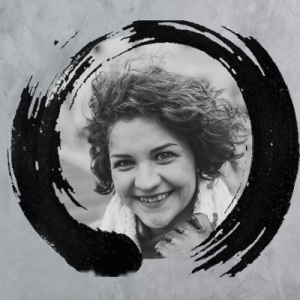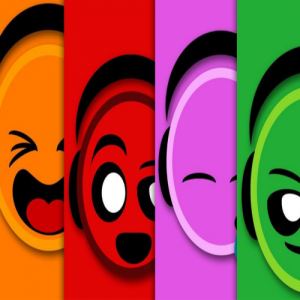I love teaching Salsa and look for ways to refine and improve the student journey. What I do is look at the wider world, gather some best practices from other dances, sports and even my work as an IT consultant and then apply them to Salsa.
A little more than a year ago a statement went through my mind that really bothered me. Few people will disagree that Salsa dancing has evolved massively over the last decade but the teaching methodology has very much stayed the same. With that in mind I drew all the things that I thought were important and put them into a weekly foundation class.
NOTE: This class is not a part of a course but a 1 hour class which is available for students of all levels to attend. As a team, we are now seeing real benefits of the Foundation course and our students are progressing at a very fast pace.
If you are curious about the content of the foundation class then please read on. Please note that this is an article for both students and instructors.
Introduction (5 Minutes)
I always assume that everyone in this class is there for the first time; therefore it is important to introduce myself and make sure that they know what type of class they have walked into. I explain that at TNT we teach a style of Salsa that is known as Crossbody On2. The name Crossbody refers to the fact that we dance along a line or slot and On2 because we emphasise the second beat of each bar and I reassure them that we will go through this in more detail soon.
We then introduce the foundation class which is a 1-hour long interactive class that focuses on 3 core components of Salsa dancing:
– Music
– Personal Movement
– Connection
Through this class we also have a massive emphasis on the students talking to each other and interacting.
What happens in the 3 sections
The real aim of this section is to welcome new Salsa dancers into this great scene. We are friendly and the Salsa newbies need to see, hear and experience this as well as get excited about the learning journey.
Music (10 Minutes)
I mention that Salsa music is an umbrella term for a whole host of music genres. The first thing I do here is to dispel the myths and fears around Salsa; Salsa is a music form just like any other and as such has a very similar musical structure. I contrast Salsa music with rock music or pop music to try to make it more accessible.
The similarities are plentiful; most Salsa and pop songs have:
– Sections and generally speaking an introduction, verse, chorus, verse, chorus, an escalation, then ending.
– Most sections repeat and within each section they will have repeating rhythms.
– Both have 4 beats in a bar.
– Both have very similar sections.
The main difference is the type of instruments used and also the various rhythms, but for the most part Salsa music is very simple and easy to listen to, understand and follow.
I then have the students do some very simple clapping and emphasis exercises; clapping in time to a count of 1,2,3,4 and repeat. I give the following important definitions:
Timing: This is the awareness, understanding and ability to be on time.
Rhythm: is a collection of timings
I then mention that in Salsa our basic building block is a dancers’ measure which is two bars of 4 i.e. 8 beats.
I then introduce the Conga Tumbao rhythm (repeated over 8 beats) which we use as our basic rhythm for On2 at TNT. We clap along and emphasise the 2nd and 6th beat of the bar with our hands, feet and voices.
The aim of this section is to put music at the forefront of what we do. This is the first thing we talk about in our classes. By the end of this section, they will have heard the instructor talk about the music genre, timing and rhythm. The other most important thing is that the vast majority of students will be able to clap along and it will help them relax as well as build confidence; most new students are extremely nervous and this makes people smile.
Personal Movement (15 Minutes)
After we have listened to the Congas and clapped along it is time to get people moving. In this section, we go through the basic, side and back steps and try to do this to the Conga Tumbao rhythm.
One of the first things I go through is the basic standing posture and demonstrate the differences between pointing, tapping and stepping and insist that everyone tries to step. I also insist on hands being above the waist the whole time so as to not let them develop lazy arms.
We then mention that the dancers’ measure is 8 beats but the basic step only has 6 steps. I break down the basic steps (forward and back) while Congas are playing in the background. We do this a few times before moving onto the side and back steps. I do not spend time explaining the side or back step but mention that they should try and keep the basic rhythm and basic shape. Most of the students get this fine and once they go through it a few times I will give tips and things to avoid.
We then drill these three steps into different ways of recognising the rhythm:
1) Ku-Ku-Pa, Ku-Ku-Pa
2) Slow-Quick-Quick, Slow-Quick-Quick
3) Prepare-Action-Recover, Prepare-Action-Recover
4) &23, &67
I then mention that each of these ways of remembering and connecting to the rhythm produces the same outcome so the student should use whichever one they see fit.
Connection (25 Minutes)
Before we partner up we go through the etiquette of Salsa and we talk a lot about respecting personal boundaries.
We first work on tension levels and understanding what applying and receiving impulses feel like; the softest energy is level 1 and the maximum is level 10; both of which are useless as one is dangerous and the other has no connection. We move on to applying energy level 2 to allow the hands to move while having a soft connection.
This is also where we introduce rotations and the reason behind it.
We then ask the followers to keep their eyes closed for the duration of the following exercises to increase their awareness and trust in the connection. The leaders will now lead the followers around the room using the following connections:
– Palms to palms
– Leaders’ hands on followers’ shoulder blades
– Leaders behind the followers and hands on shoulders
– Leaders’ palms up and followers’ hands on top
– Standard closed hold
The aim of this section is to build an awareness of what leading and following are and the various ways of connecting. It also helps to define the roles of leader and follower and tries to remove anticipation.
Sometime during this session, I will demonstrate why the connection is important, I lead a partner smoothly and effortlessly while her eyes are closed. I will then do the same with my eyes closed. This is to demonstrate the power of touch in leading and following.
During these exercises I will also ask the leaders and followers to probe some non-invasive information from each other. This is to demonstrate the diversity of the Salsa scene and also to break the ice; simple questions like finding out your partners’ country of birth, city of birth and local cuisine. This also has the added benefit of taking the leaders’ and followers’ minds off the task and trying to make this instinctive.
Closing (5 Minutes)
Closing the session is important for several reasons. The first thing is to congratulate the new students. As seasoned dancers, we can see that the amount of content is a lot and just to survive is a great feat.
I will also demonstrate the syllabus for our students to give them a sense of progression, how they can grow and the reasons behind why we do certain moves and at what level. I let the students know that our foundation class is followed by four levels of partnerwork classes from beginners to advanced.
I always leave the class with a final thought. To get the most out of Salsa do not be focused on targets but enjoy the journey, the little things and the people that you will build relationships with. As with most activities and hobbies, it will be the people that will make the difference.
Foundation Summary
I feel that as the scene is growing this is the way in which we want to introduce our new students into the world of Salsa. This is how we teach our Salsa Foundations. Different schools will have different ways of teaching beginners but this has done wonders for ours and we feel that their progression is beyond amazing.
I hope you have enjoyed this read and whether you are a beginner, advanced dancer or instructor you got something from this.





Leave a Reply